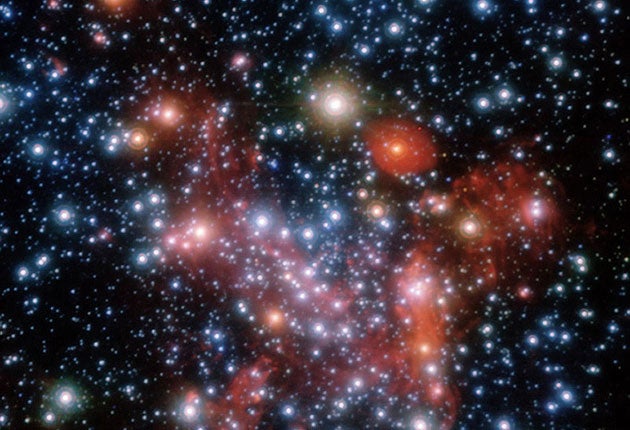Giant black hole found at galaxy's core

Astronomers who have taken a close-up look at the heart of the Milky Way say that "beyond any reasonable doubt" a giant black hole lurks at our galaxy's core.
The 16-year study tracked the motions of 28 stars circling the centre of the Milky Way.
Just as swirling leaves caught in a gust of wind can provide clues about air currents, so the stars' movements reveal information about forces at work at the galactic centre.
The observations show that the stars orbit a central concentration of mass four million times greater than that of the Sun.
Study leader Professor Reinhard Genzel, from the Max-Planck Institute for Extraterrestrial Physics in Garching, near Munich, Germany, said: "Undoubtedly the most spectacular aspect of our long term study is that it has delivered what is now considered to be the best empirical evidence that super-massive black holes do really exist.
"The stellar orbits in the galactic centre show that the central mass concentration of four million solar masses must be a black hole, beyond any reasonable doubt."
The astronomers were also able to measure with great accuracy how far the Earth is from the centre of the galaxy - a distance of 27,000 light years.
Usually the central region of the Milky Way is hard to see because the view from Earth is blocked by interstellar dust.
To overcome this problem, the astronomers focused on infrared light wavelengths that can penetrate the dust clouds.
The galaxy's central mass, long suspected of being a giant black hole, is known as "Sagittarius A star".
The European Southern Observatory study, which began in 1992, was made using the 3.5 metre New Technology Telescope at the La Silla observatory and the Very Large Telescope - an array of four 8.2 metre telescopes at the Paranal observatory. Both operate from the Atacama desert in Chile.
The research is due to appear in a forthcoming edition of the Astrophysical Journal.
Join our commenting forum
Join thought-provoking conversations, follow other Independent readers and see their replies
Comments
Bookmark popover
Removed from bookmarks